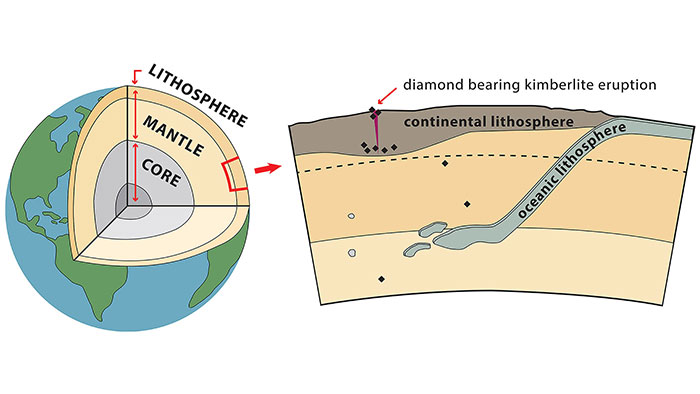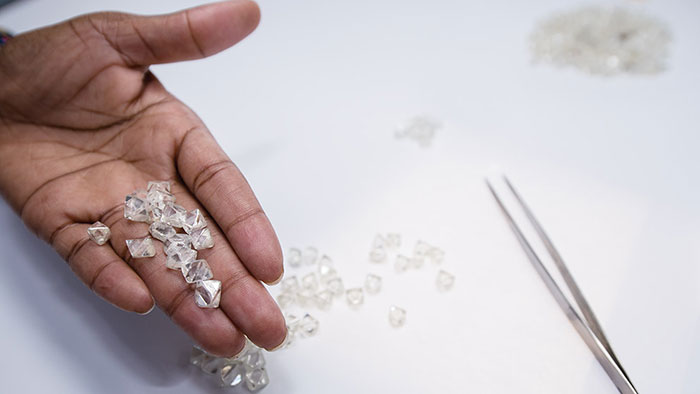WHERE DIAMONDS COME FROM
 Diamond Formation
Diamond Formation
More than a billion years ago, 100 miles (161 km) or more beneath the earth’s surface, in a cauldron of extreme temperatures and high pressure, carbon atoms bonded tightly together. At temperatures higher than 2100oF (1150o C) and pressures 45,000 times greater than at sea level, crystals formed, resulting in the hardest natural mineral on Earth: diamond.
Diamonds remained hidden deep within the earth for hundreds of millions of years, until volcanic activity violently transported them upwards towards the earth’s surface in magma. Vertical rock formations, called “kimberlite pipes,” are remnants of these ancient volcanoes. Over time, erosion frees some of these rough diamonds from their host rock. Transported by rivers and streams, these diamond crystals end up in river gravel beds and silt often at great distances from their original source. Until the late 1800s, the world’s diamonds were found and collected from these alluvial beds.
Today, most diamonds are found in kimberlite pipes, which are the primary source of mined diamonds.

The discovery of a kimberlite pipe in South Africa in 1869 marks the beginning of the modern diamond industry. With it came the development of mining operations producing tens of millions of carats of rough diamonds each year – that includes a major discovery in Botswana in 1967, as well as other areas of Africa, Australia, Siberia and the Northwest Territories of Canada.
By the late twentieth century, the earth was no longer the only source for diamonds. In 1970, General Electric began creating diamonds in a laboratory and the first gem-quality laboratory-grown diamond were sold in 1984. With advances in technology, man-made diamonds have become more common and harder to detect. Learn more about laboratory-grown diamonds.
Identifying Country of Origin
Identifying a diamond’s country of origin is incredibly challenging. Unlike some colored stones, a natural diamond’s country of origin cannot be determined through close examination of the polished stone. Data must be collected at the time of extraction and the rough diamond must be analyzed first. Through a proprietary process developed by GIA called scientific matching, GIA diamond graders can match characteristics of the polished stone to the original rough that was analyzed to confirm the polished diamond’s country of origin.

GIA and other diamond grading labs evaluate the quality of polished diamonds using the 4Cs of Diamond Quality (Color, Clarity, Cut and Carat Weight), the international standard created by GIA. However, only GIA can confirm your diamond’s country origin through a scientific process. The GIA Diamond Origin Report contains a full and unbiased 4Cs assessment of your diamond’s quality and clearly identifies your diamond’s country of origin. Learn more about the GIA Diamond Origin Report.
( copy from GIA )
** Jade Jadeite & Gemstones ( Birthstones & Anniversary Gemstones)
Learn More:
## Follow us on Instagram, facebook, youtube for more information.
Facebook: https://www.facebook.com/baikallajewelry
Facebook group: The Jade Group: https://www.facebook.com/groups/theja...
Instagram: https://www.instagram.com/baikallajew...
Twitter: https://twitter.com/BaikallaJ
Pinterest: https://www.pinterest.com/baikallaj/




